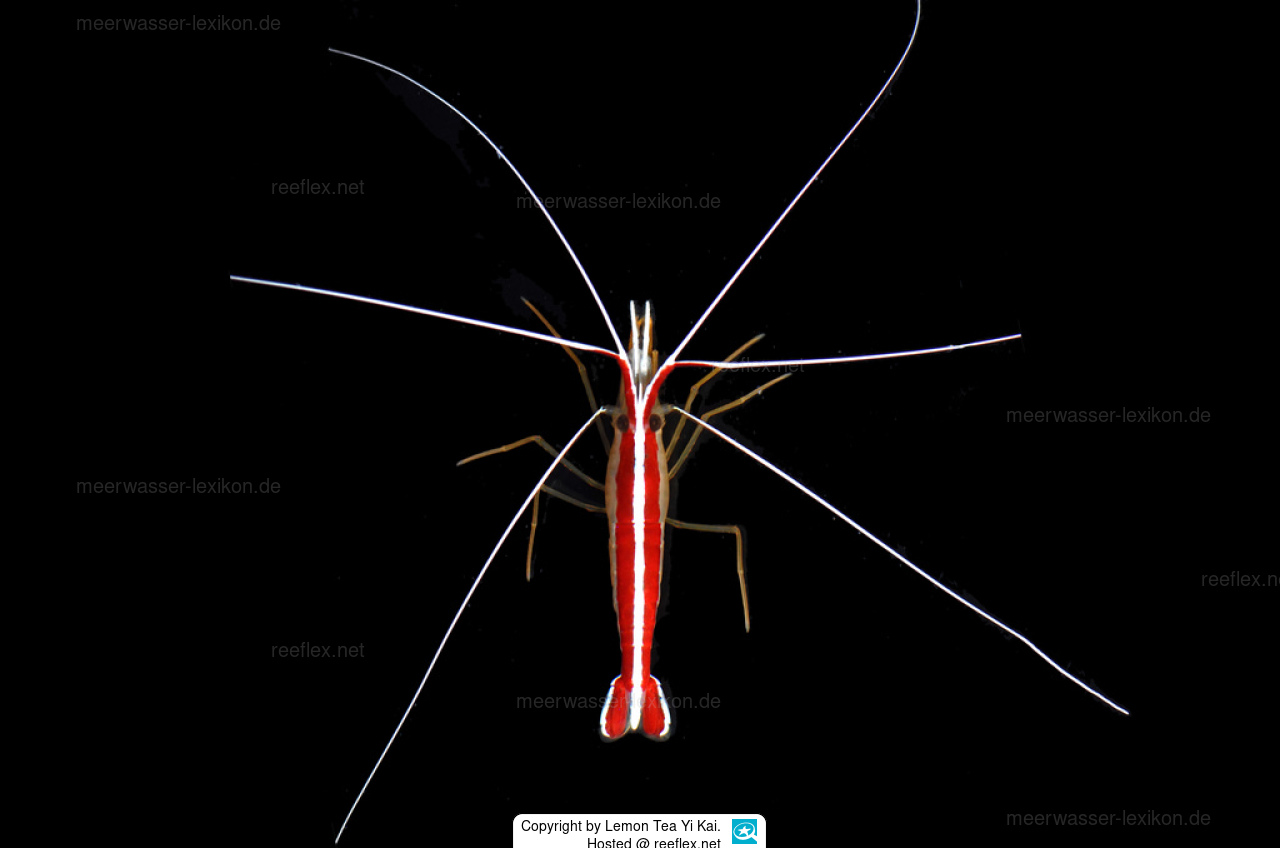Info
The image of this shrimp has been kindly provided by the well-known diver and marine photographer Sacha Lobenstein from Spain.
Generally the shrimps of the genus Lysmata:
These shrimps are hermaphrodites, meaning hybrids, because they have female ovaries and male testes tissue, but are not able to fertilize themselves.
Unlike Lysmata amboinensis - the famous Weißbandputzergarnele:
At first glance, the animals look almost identical, but the second view shows the difference:
Lysmata grabhami has a solid white stripe that runs from head to tail, and the tail has two white stripes on the tail side pockets.
Lysmata amboinensis also has a white stripe on the back,only this stretchesfrom the head to beginning of the tail, and left and right of the tail compartments each with 2 white dots.
Other distinguishing features are the areas of origin and the temperature acceptance.
The cleaner shrimp lives in the East Atlantic and West Atlantic, the Indo-Pacific and the Weißbandputzergarnele throughout the Red Sea.
Lysmata grabhami tolerate temperatures in the range of 18 - 26 degrees Celsius,
Lsymata amboinensis requires temperatures in the range of 20-27 degrees Celsius.
This shrimp is a welcome cleaner, that removes fish parasites.
It has been proved around the Canary Islands,
Annobon, Ascension, Bermuda, Cape Verde, American coasts, European waters, the Gulf of Mexico, Madeira, St. Paul, Ascension, Bermuda, Madeira, New Caledonia, Red Sea.
Both species have recently received a visually very similar sister, it has several white spots on the tail and the tail fan.
Synonym:
Hippolysmata grabhami Gordon, 1935







 Lemon Tea Yi Kai, Japan
Lemon Tea Yi Kai, Japan




































